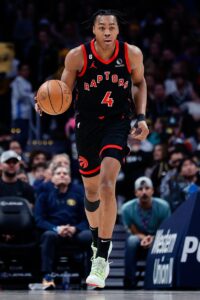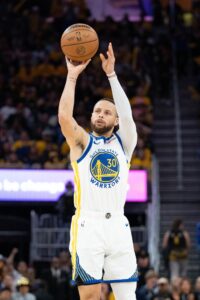While there is still a bit of time before NBA training camps open, we have a good idea of what most team rosters will look like to begin the season. As we recently detailed, 70 of the league’s 90 available two-way contracts are currently filled. Since those players only have $75K in guaranteed money, however, teams have plenty of flexibility to make changes, whether those come in the form of cuts or promotions to standard deals.
Since the inception of the two-way contract in 2017, dozens of players have been called up from two-way deals to standard contracts. Players like Paul Reed, Chris Boucher and Alex Caruso are among the players to cash in their two-way deals into big standard contracts with their impressive play and development over time. The Heat made waves in the 2023 NBA Finals when several rotation players on their team made big contributions, many of whom spent time on two-way deals, including Gabe Vincent, Max Strus, Duncan Robinson and Caleb Martin.
While the Heat are an extreme case of two-way players becoming highly paid standard contract players, more and more teams seem to be recognizing the value of these developmental spots. Almost every team currently has a G League affiliate and those who don’t have committed to adding one. And this year, the NBA increased two-way contract spots from two per team to three, creating 30 new roster spots.
As noted above, teams are still figuring out what to do with those spots, but there are currently players signed to two-way deals who seem poised to continue the trend of promotions making an impact. With that said, here are three prime candidates to be elevated from their two-way deals to standard contracts sometime during the ’23/24 season, whether or not it happens during the preseason process.
Quinones wasn’t on many public top 100 big boards ahead of the 2022 NBA draft, so it was a mild surprise to see him signed to a two-way contract right after the draft. Though he was signed, Quinones was an example of a two-way player getting shuffled around in the preseason, and he ended up getting cut before the season began.
More roster shuffling occurred in March and Quinones penned a 10-day deal before being signed to a two-way deal to close out the year. During the time in between, the Memphis product put up terrific numbers for the Santa Cruz Warriors in the G League, averaging 20.2 points in the regular season and showcase and he shot 37.5% from deep on 7.7 attempts. Quinones continued dominating in the summer during Las Vegas Summer League where he averaged 21.2 points and 5.2 assists. The Warriors re-signed Quinones to another two-way deal in late July.
The Warriors have a ton of roster flexibility moving forward. They have just 13 players signed to standard deals and only Quinones occupies a two-way deal. Preseason and training camp seems like an ample opportunity for the 6’5″ guard to reverse his fortunes from a year ago and get promoted to the main roster.
Like Quinones, Wigginton is a guy who has been lost in Milwaukee’s back-end roster shuffling. Wigginton has been in Milwaukee’s system for two seasons, playing for the Bucks on a two-way deal in 2021/22, not being re-signed, then later being added to another two-way deal at the end of the ’22/23 season.
Wigginton averaged 19.2 points and 5.9 assists last season in the G League across 38 regular season and Showcase Cup games. The 6’2″ lead guard also has 26 games of NBA experience (one start), holding averages of 5.0 points and 1.4 assists.
The Bucks don’t have a logical way to add Wigginton to their main roster before the ’23/24 season begins. Their 15-man roster is set and a trade or cut prior to the season doesn’t seem likely. If the Bucks make a move at the trade deadline, Wigginton could be a logical option to call up if Milwaukee sends out more than they take in. If not, it’s entirely possible the Bucks sign the Iowa State alum to a standard deal in the offseason, much like they did with A.J. Green this year.
As we mentioned, Heat players have historically been elevated from two-way contracts. In fact, they’ve promoted a two-way player to a standard deal in every year (or following offseason) since their inception in 2017 (Derrick Jones in ’17/18; Robinson in ’18/19; Chris Silva in ’19/20; Vincent and Strus in ’20/21; Martin in ’21/22; and Orlando Robinson in ’22/23). Cain is the next logical candidate for a promotion.
Cain was reportedly waiting for a standard contract offer before ultimately re-signing with the Heat on a two-way deal earlier this month. The Oakland product impressed last season, averaging 5.4 points in 18 NBA games and 20.5 points in 25 G League games last year.
The Heat are still waiting on the Damian Lillard situation to shake out, but they still only have 13 players signed to standard deals. Miami needs to sign a 14th player prior to the season and Cain would be a logical option if a Lillard trade doesn’t materialize before then. If not, it seems likely they’ll bring him up at some point during the season.
 Scottie Barnes
Scottie Barnes Haslem, who made his Heat debut in 2003, was with the franchise for two decades. No players on the list below are close to reaching that benchmark yet, but Haslem’s retirement means that we have a new player atop our list of the longest-tenured players by team:
Haslem, who made his Heat debut in 2003, was with the franchise for two decades. No players on the list below are close to reaching that benchmark yet, but Haslem’s retirement means that we have a new player atop our list of the longest-tenured players by team: